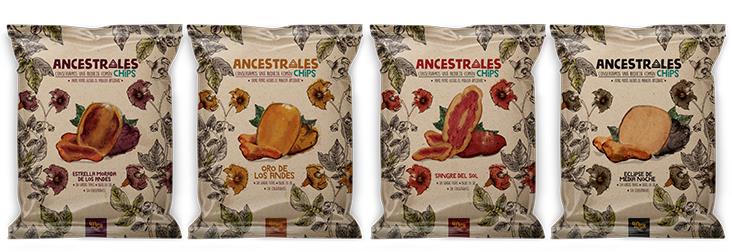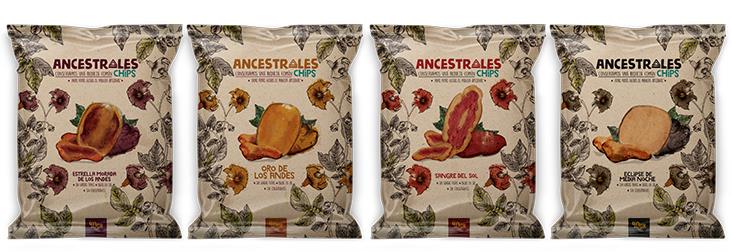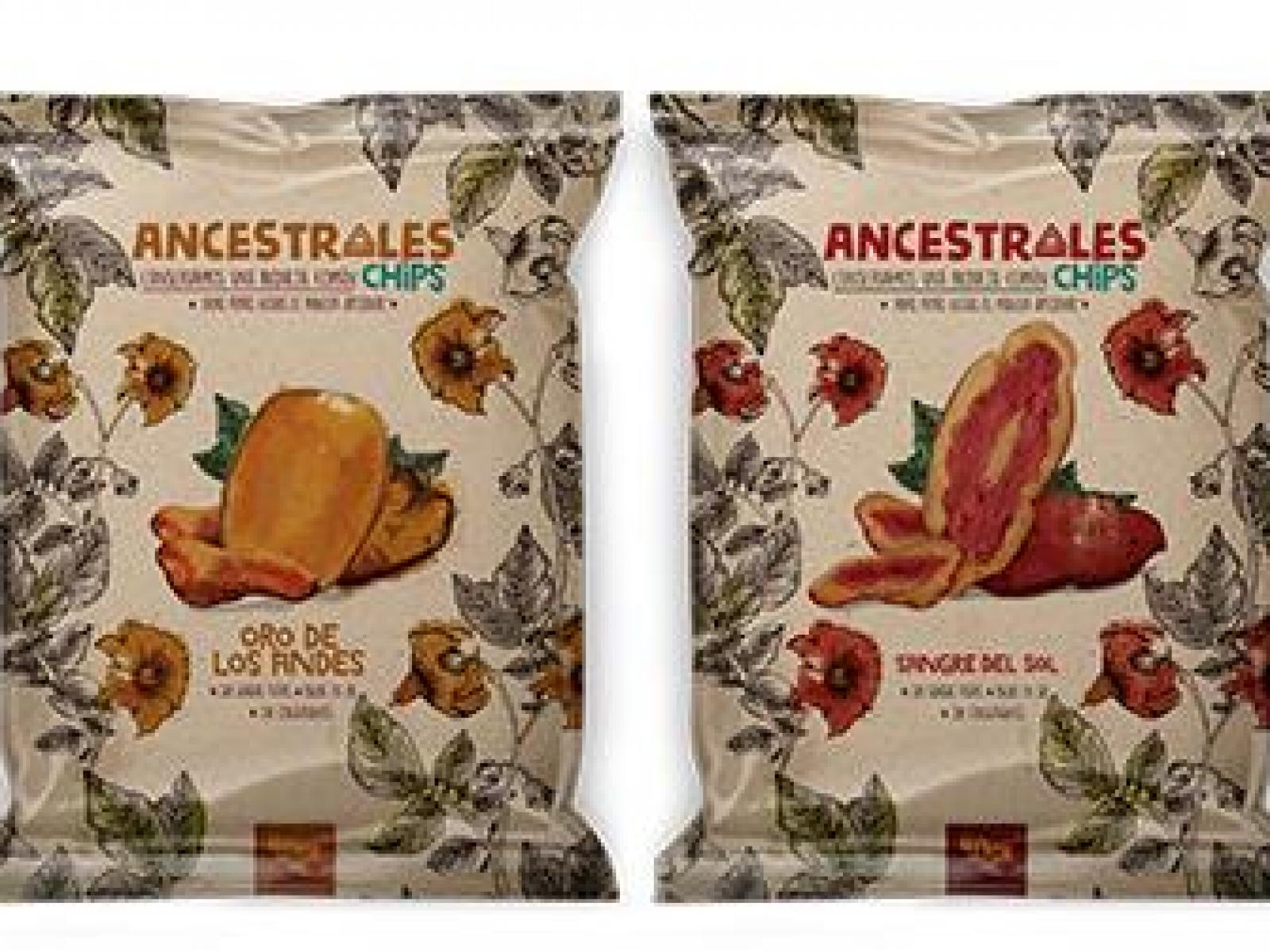An Overview Of Our Solution
The Paramos are fragile ecosystems that are being impacted by the extension of the agricultural boundary and the contamination of the soil and the water by agrochemicals, due, among other aspects, to the inefficient use of the soil by the conventional agricultural systems. The solution proposed by "Family of the Earth" is the implementation of a model of greater efficiency, based on the organic production, transformation and commercialization of Andean ancestral foods. The model is based on the recovery and propagation of native seeds, which generate healthy food that is transformed to add value in an innovative way through the production of snacks type chips. The products are marketed in different channels to reach consumers looking to take care of their health, preserve the paramos and support peasant families.
- Population Impacted:
- Continent: South America
Organization type
Population impacted
Size of agricultural area
Production quantity
People employed
Describe your solution
The recovery of 10 varieties of native potatoes began to change the unsustainable agricultural practices in the páramos to a sustainable practices, the recovery of these native seeds has increased the agro-alimentary wealth and the conservation of these allows us to find resistant potato seeds to climate change. The integration of processes such as the recovery of native seeds, planting and ecological management of crops, as well as the aggregation of value and commercialization by producer networks allow the environmental and economic sustainability of agriculture in natural reserve areas and ecosystems. The business model seeks to reduce the areas of food planting in the páramos because the transformation of the native potatoes into chips allows greater profits to the producer, which results in not having to plant large areas for economic sustainability. The organic cultivation of native potatoes allowed to improve the quality of the soils, measurements were made before and after the first cycle harvest and we found that after the application of organic farming practices, the soils had corrected their acid pH, point. Also the application of organic fertilizers allows better retention of water in these soils.
Describe your implementation
All starts with a soil study to determine the fertilization plans. Three types of organic fertilization were chosen to determine de best yield in the ten varieties. Then we set up the seeds and inoculated it with baculo virus to protect it from moth attack and prepared the soil of the farms to plant in each one. The potatoes were weighed by variety and by type of fertilization. All the crop was monitored with students of Agrarian Sciences of the National University and the applications of pertinent biological controllers were made. Our biggest problem was in controlling fungi because due to the climatic variation the crops had excess rains, and we managed to control by applying oxygen peroxide twice a week. The key success factors were innovation with native potato seeds, with special nutritional characteristics and attractive colors, innovation in design, and innovation in the proposed business model, where 50% of value added utilities return to the producer in order to make their economy sustainable. In the current food system in Colombia the peasant is subject to price roulette, in our model, the price is agreed and fair, this added to the guarantee of purchase of all production, were a factor of success.
External connections
The project was funded by public institutions such as the National University of Colombia, the National Learning Service, CORPOICA, the Mayor's Office of Bogotá and the Government of Cundinamarca. Likewise, organizations of producers of the rural zone of Bogota and students of the Faculty of Agrarian Sciences of the National University of Colombia participated. With our proposal institutions are beginning to value proposals that include value added and marketing, we have advanced in a proposal that touches all links of the food system, with the aim of returning the value added to the farmer. In our business model, peasants own the business model as such, they are the direct beneficiaries of the profits it produces to transform with innovation.
What is the environmental or ecological challenge you are targeting with your solution?
The páramos are tropical ecosystems of mountain above 3,000 msnm, count on species like frailejones, Andean bear, condor and puma among others, of which more than 3,500 are endemic. They provide ecosystem services such as water regulation and conservation (they provide water to 80% of the population of the Andean countries). Only Colombia, Venezuela, Ecuador, Peru and Costa Rica have páramo, where 30% is conserved, 30% modified and 40% transformed. 50% of the world's páramos are in Colombia (3% of the country) and 70% of the population lives on the water they produce. There are 2'906.137 ha of paramos that have between 120 and 400 thousand inhabitants. The department of Boyacá has the largest extension (18.3%) followed by Cundinamarca (13.3%). 13% of the páramos surface has agricultural activity. Conventional potato crops make intensive use of agrochemicals and change the use of the soil on the páramos, altering their functions and contaminating the water and the soil
Describe the context in which you are operating
The rurality of Bogota comprises 124,000 hectares of which about 70% belong to the páramo ecosystem. Within this ecosystem live about 17,000 people in approximately 1,300 properties. Food production in the rural area of Bogotá amounts to more than 6,300 tons per year, of which 85% correspond to conventional potato crops, this means a production of more than 5,000 tons corresponding to potatoes of varieties Pastusa, Toquereña and Supreme
For the pilot project we developed in this area we worked on farms located between 3000 and 3300 meters above sea level, in approximate areas of planting of 1000 square meters each. The 10 varieties of potatoes planted on these farms are native creole varieties that have special characteristics of flavor and color. Three types of ecological fertilization were used to allow participatory research on new native potato crops and yields.
How did you impact natural resource use and greenhouse gas emissions?
For more than 10 years our organization has been recovering native seed potatoes throughout Colombia, we managed to reintroduce 10 varieties of promissory potatoes in the peasant culture because they were forgotten. We managed to have more than 30 peasant families re-grow native potatoes, as well as more than 20 restaurants are interested in their consumption. Likewise we improve the agricultural and economic yields of the crops through the ecological fertilization and the aggregation of value. The use of efficient microorganisms and locally produced leavens with manure substantially improves soil life and this improves the food production capacity on the farm. The diversity in the soil translates into the capacity to produce more and better foods, as well as to support more biodiversity of flora and fauna.
Language(s)
Social/Community
Water
Food Security/Nutrition
Economic/Sustainable Development
Climate
Sustainability
Our initiative focuses on developing specialized markets for innovative products that allow the small farmer to reap additional benefits as a result of productive and innovative entrepreneurship. We develop 3 types of products: potato chips, seeds and fresh potatoes for restaurants. In the case of Potato Chips each package is sold in the local market at $ 2,000 pesos and has a gross profit of 35%. For the market of the seed can be accessed at a price of up to $ 200,000 pesos per package and for restaurants can sell at a price of up to $ 250,000. These prices are much higher than those of the conventional product, which fluctuate between $ 20,000 and $ 50,000 pesos.
Return on investment
The project required investments for about $ 9'000.000 regard to seeds, solid fertilizers, liquid fertilizers, labor and biocontrol. For this exercise 90 production bundles were obtained, 60 seed bundles were left, of which 50 bundles were sold to other producers and 10 to the network itself. The price of the seed was $ 200,000 per package. 20 bundles were sold to restaurants at a price of $ 250,000, which recorded revenues of $ 5,000,000. Likewise 10 bales of potatoes were processed, which were bought from peasants at $100,000 pesos per package. With these packages 3600 packages of potatoes were obtained at a price of $ 2000 per package with a profit of 35%. Income for this production cycle is $ 20,520,000.
Entrant Image

Entrant Banner Image

How could we successfully replicate this solution elsewhere?
In order to generate a replication of the process, it is necessary to focus efforts on further developing the markets and obtaining value added infrastructure and technology. Alliances with business schools, gastronomy schools and public institutions can make this model replicate in different areas. At this moment we are immersed in a process of replication with the Government of Cundinamarca. The production of genetic material for this replication is guaranteed, and we have developed an agro-ecological technological package for the control of pests and diseases, which guarantee a good production, also the markets of restaurants and potato chips are making their way in The market with good rhythm The main failure of resources to accelerate the processes of packaging, sale and marketing.
